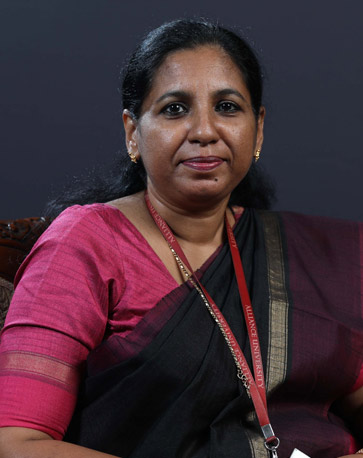Dr. Reeba Korah
Professor and Interim Dean
Alliance College of Engineering and Design
Engineering is all about problem solving by the application of Science and Math and a good engineer is expected to create sustainable solutions by using as few original ideas as possible. The word ‘Engineer’ was coined in the 14th century referring to a person who operates an ‘engine’. This engine was nothing but a small military machine such as Catapult. Thus, the oldest engineering discipline can be considered as ‘Military Engineering’. Later when the design of civilian structures such as roads, bridges, buildings, dams and canals matured as a technical discipline, it was termed as ‘Civil Engineering’ in an attempt to distinguish between non-projects from Military Engineering.
Discovery of electricity in the 18th century was a breakthrough which later paved way for Electrical Engineering as a new discipline. Application of Electrical Engineering helped resolve many problems at large and hence can be considered as the one which shaped the modern world. The history of Electronics is dated back to almost the end of 19th century while vacuum tubes were invented to amplify electrical signals. 20th century witnessed the invasion of Electronics wherein many of the mechanical machines such as computational machines, started getting replaced with their electronic counterparts with the ability of miniaturization.
In this 21st century, our everyday life is spinning around electronic systems, be it portable gadgets, home appliances, computers, transport systems, cell phones, cameras, TV, etc. Today’s world of electronics has made deep inroads in several areas, such as healthcare, medical diagnosis, automobiles, industries etc., and convinced everyone that without electronics, it is difficult to live and work.
Since the scope of computation and computational machines were identified and embraced by the world at the end of the last century, Computer Science and Engineering as a discipline gained prominence. Artificial intelligence (AI) is a wide range subsidiary of computer science which is concerned with building smart machines capable of performing tasks that typically require human intelligence. With advancements in machine learning and deep learning AI is creating a paradigm shift in virtually every sector of the tech industry.
Till a decade back, these engineering disciplines had clear boundaries and the respective engineers worked in silo. However, the foundation of any engineering discipline being built on analytics and logics, it has been realized that interaction and co-existence of these disciplines can resolve many problems in a more brilliant and innovative way. Innovation is more likely to happen at the boundaries of two or more of the disciplines. Fourth Industrial revolution augmented such interactions among engineering disciplines to a great extent. As an outcome, now Civil engineers will need to understand digital tools such as Surveying tools, BIM tools, Planning tools, Virtual Reality or the associated control systems so as to provide effective solutions to civil engineering problems.
Mechanical Engineering is enhancing its product portfolio with digital functionalities. The need for companies to process and integrate data from various sources has led to new collaborations and models. Due to very good availability of CAD component data the actual project work in 3D engineering takes less time. Digital capture, processing and exchanging technologies provide rapid access to comprehensive data. Machines can now form mechanical inter systems since they can link manufacturing processes or applications from anywhere on the planet and obtain performance parametric data through sensors, all in real time. With digital twin technology driven manufacturing options, manufacturers get a virtual replication of any product that can be evaluated in terms of matching a digital design and its projected final product functionality. It helps integrate software and automation on a central data platform for optimizing manufacturing processes of any complexity. ’Smart industries’ ensure increased productivity, improved resource efficiency, reduced machine down time, reduced power consumption and reduced time to market.
In the engineering academia, even if the conventional disciplines by virtue continue to exist as before, the technical skills to be imparted to the students are not only domain specific but also cross disciplinary. In fact, the engineering institutions and the academic community should focus on moulding ‘T-shaped’ personalities who can be deployed as experts in their domain to clear bottlenecks, as non-experts in allied domains to free up expert time to clear bottlenecks, as better communicators and as more empathetic humans.








